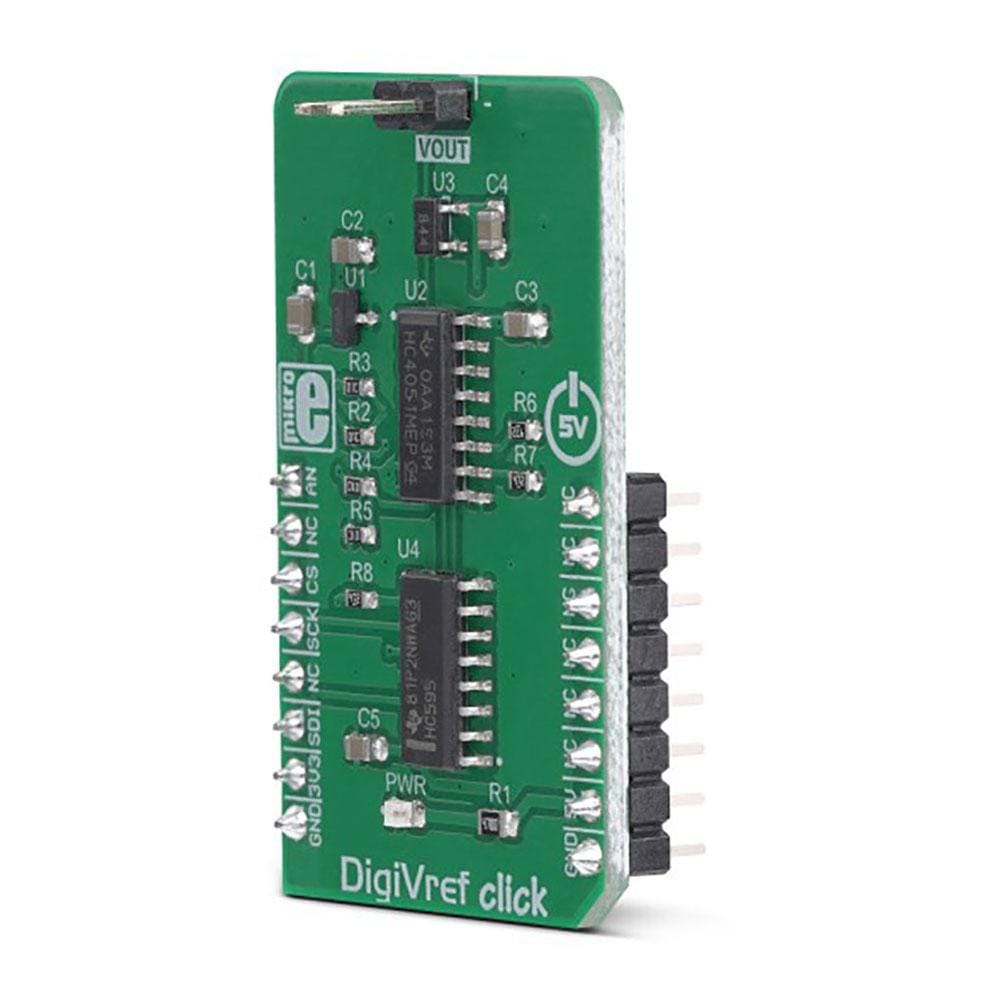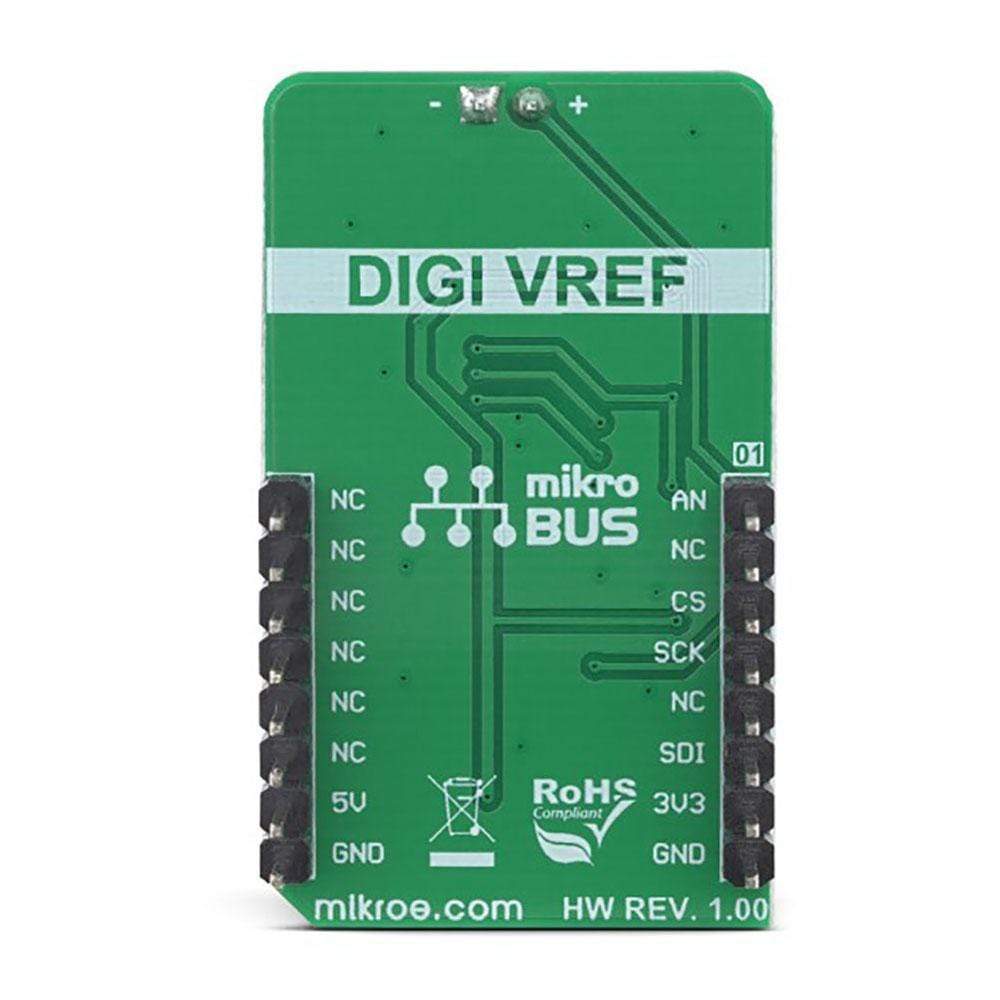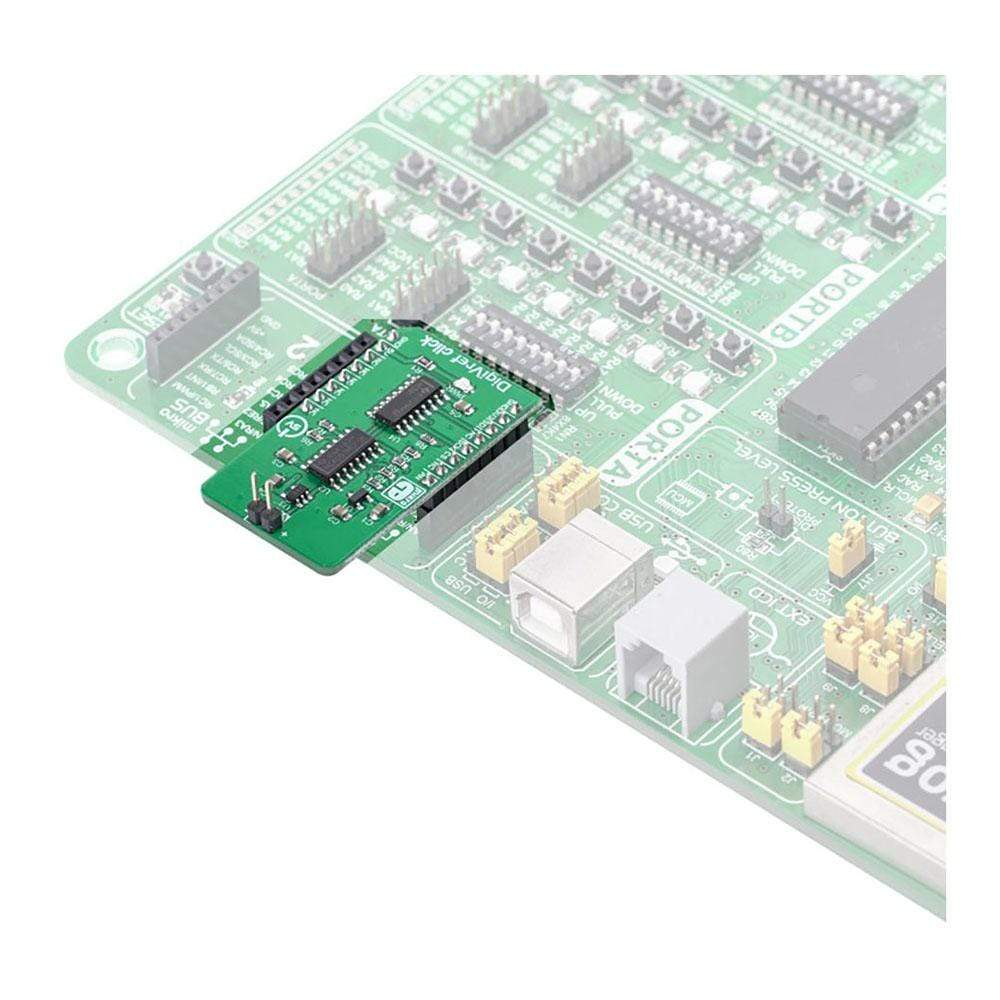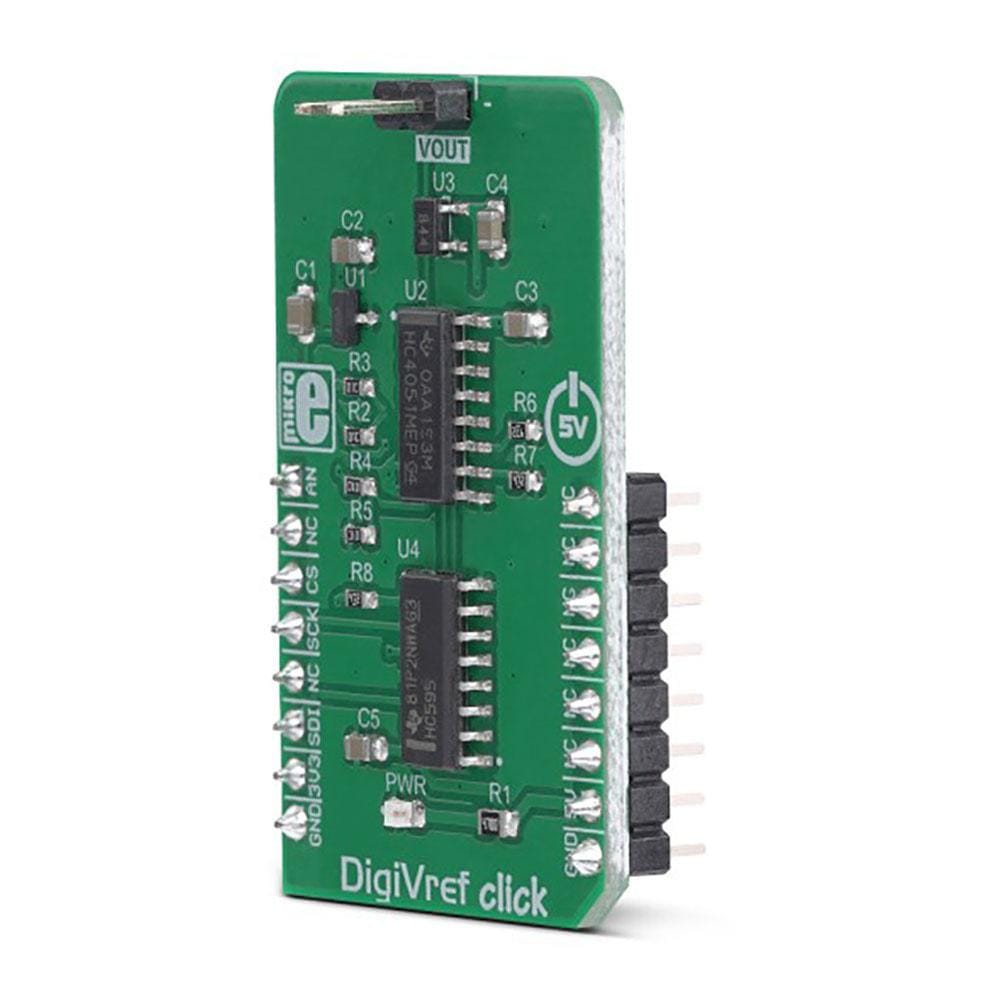
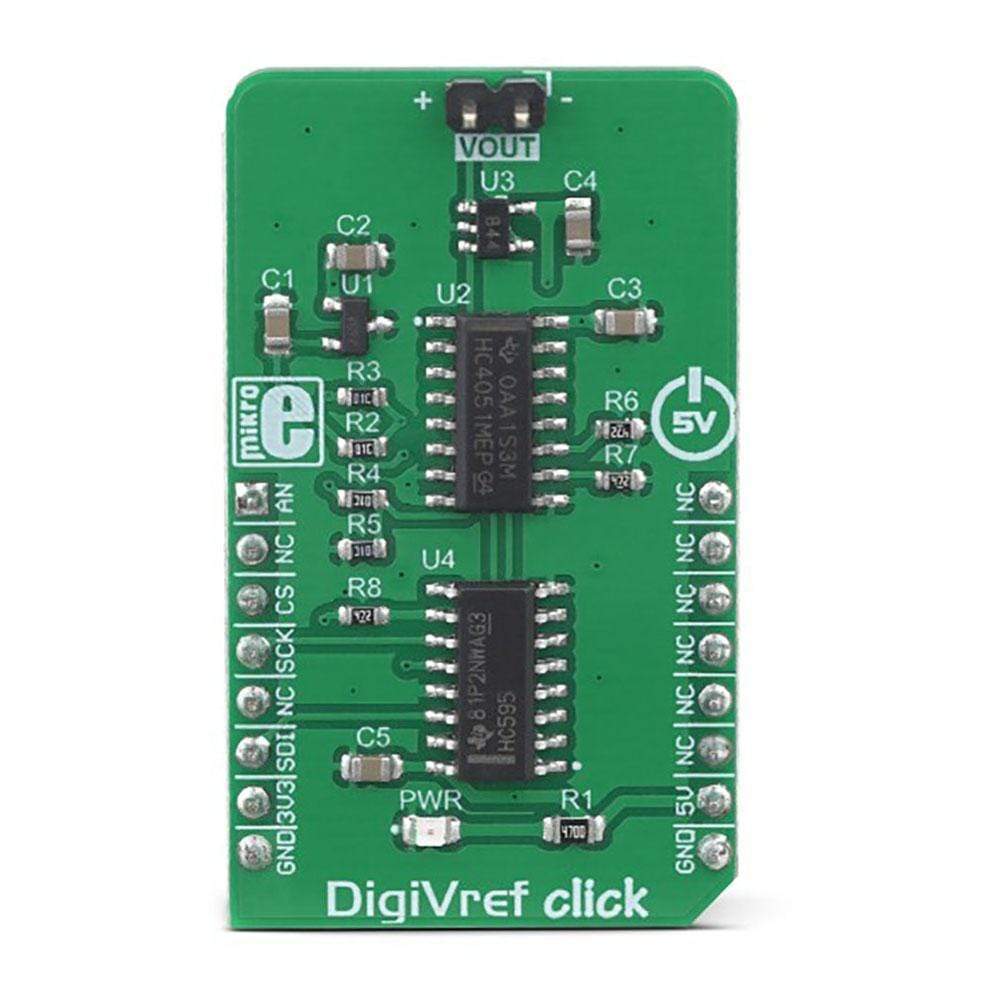
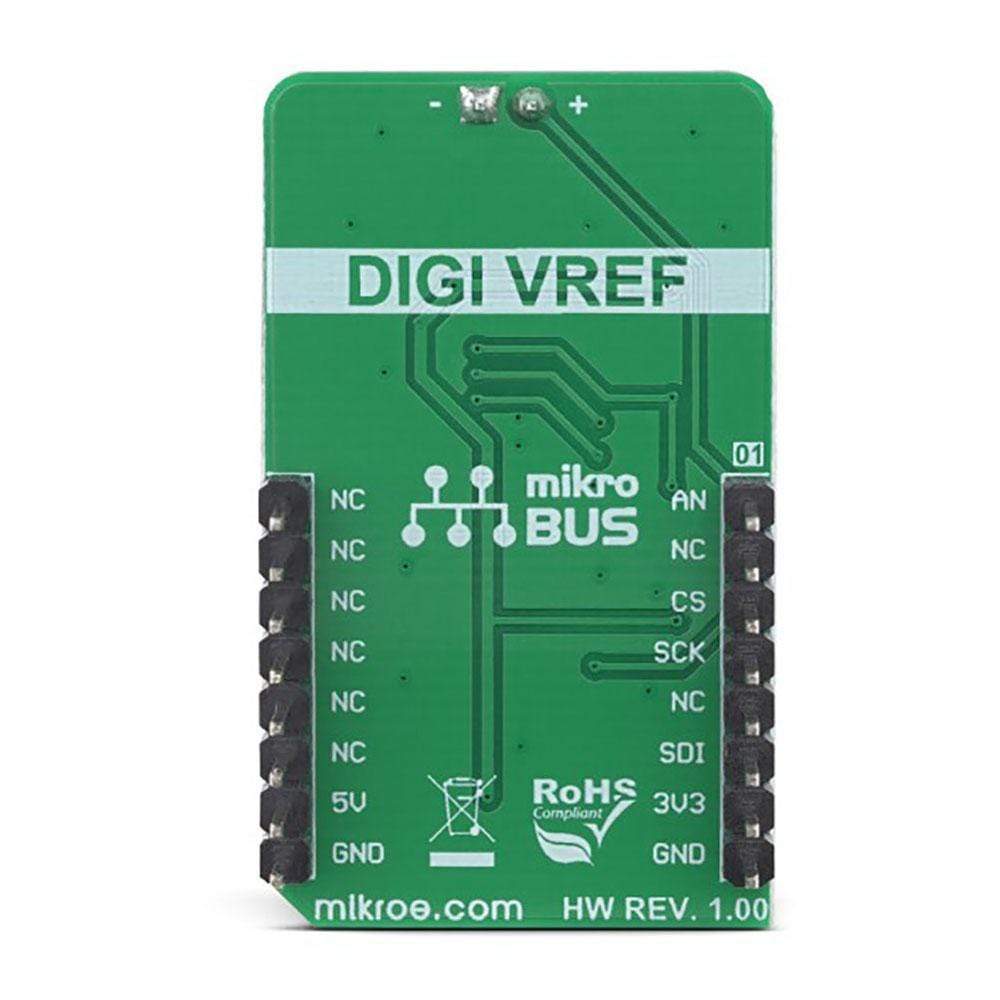
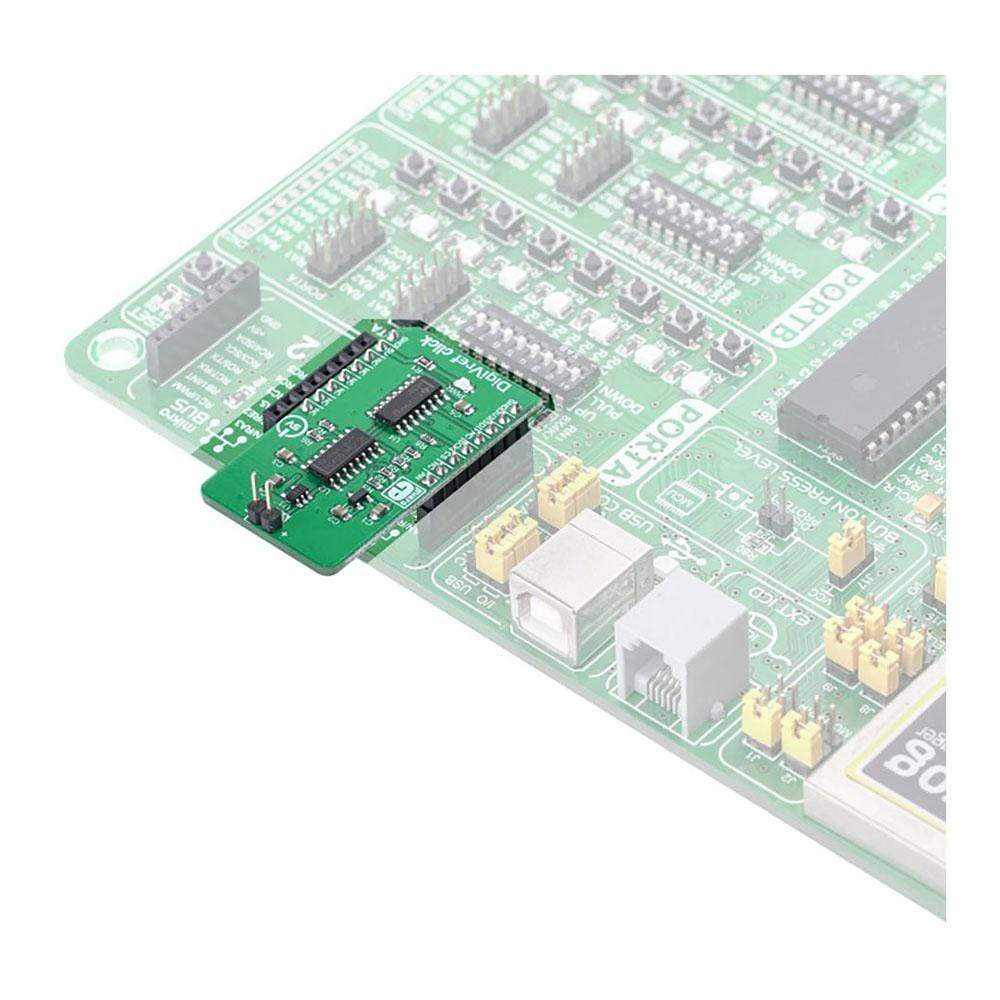
Overview
The DigiVref Click Board™ is a very precise voltage reference Click Board™, which allows one of four different voltage values to be selected over the SPI interface. Once the selection is done, the voltage reference stays fixed, even when the SPI interface is completely disconnected. The voltage reference is buffered by an operational amplifier, and thus it is very stable. Thanks to the MCP1541, a high precision voltage reference IC, and high thermal stability used resistors, the output voltage remains highly regulated, keeping the thermal drift very low. It can be used whenever a precise voltage reference is required
Downloads
Das DigiVref Click Board™ ist ein sehr präzises Spannungsreferenz-Click Board™, mit dem über die SPI-Schnittstelle einer von vier verschiedenen Spannungswerten ausgewählt werden kann. Sobald die Auswahl abgeschlossen ist, bleibt die Spannungsreferenz fest, selbst wenn die SPI-Schnittstelle vollständig getrennt ist. Die Spannungsreferenz wird durch einen Operationsverstärker gepuffert und ist daher sehr stabil. Dank des MCP1541, einem hochpräzisen Spannungsreferenz-IC, und der verwendeten Widerstände mit hoher thermischer Stabilität bleibt die Ausgangsspannung hochgradig geregelt, wodurch die thermische Drift sehr gering gehalten wird. Es kann verwendet werden, wenn eine präzise Spannungsreferenz erforderlich ist
| General Information | |
|---|---|
Part Number (SKU) |
MIKROE-3334
|
Manufacturer |
|
| Physical and Mechanical | |
Weight |
0.019 kg
|
| Other | |
Country of Origin |
|
HS Code Customs Tariff code
|
|
EAN |
8606018714353
|
Warranty |
|
Frequently Asked Questions
Have a Question?
Be the first to ask a question about this.

